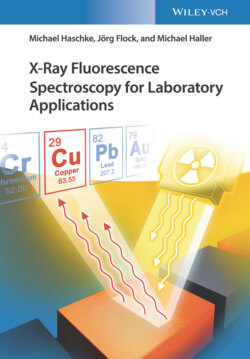Читать книгу X-Ray Fluorescence Spectroscopy for Laboratory Applications - Michael Haschke, Jörg Flock - Страница 44
3.4.4.5 Preparation of Special Materials
ОглавлениеThe previously described procedures can be used for several material classes. However, for several materials special conditions must be fulfilled to produce fusion beads of high quality (Sear 1997). We will mention a few of them here:
Carbonates: In the case of melting carbonates, the gas produced from the decomposition of the carbonate can have difficulties escaping from the melt because the flux has a lower melting temperature than the carbonate. This means that the gas is blocked by the viscous liquid and consequently produces foam that can completely fill the crucible. Calcium carbonate has a melting point of 900 °C. In this case, tetraborate has to be used since it has a higher melting point. If the flux is a coarse powder the gas can escape through the porous flux (Giles et al. 1995).
Carbon: Pure carbon can be present in small amounts in the various sample qualities. It has to be removed before the fusion process. This is achieved by adding small amounts of ammonium nitrate. This will oxidize the carbon. The unused ammonium nitrate evaporates during the melting process. Its melting temperature is only 170 °C.
Metallic compounds: The metallic particles should be milled to a very fine grain size. They then can be mixed with an oxidizer. Lithium carbonate has been proved to be very efficient. For the fusion procedure 5 g of tetraborate should be melted while the mold is rotated to coat the surface of the mold. Then the melt should be cooled down during rotation until the surface has solidified. Now 0.5 g of the metallic powder together with 1.25 g of LiCO3 can be added on the top of a layer of 1.8 g boron oxide (B2O3). For oxidation and melting of the boron oxide it should be heated to an intermediate temperature, which prevents an outgassing of CO2. After the complete oxidation of the material a standard fusion procedure can follow.
Sulfide minerals: Sulfides are difficult because they can corrode and destroy the mold. This can be overcome by complete oxidation of the sample material to sulfate. The loss of sulfur due to evaporation is problematic, and therefore oxidants have to be used. Depending on the analyte elements potassium pyrosulfate or nitrates of lithium or sodium can be used.Ammonium iodide cannot be used for the improvement of the casting because sulfur evaporates with ammonium.Norrish and Thompson (1990) describe a procedure for the analysis of sulfides. They used 0.26–0.66 g of the sample, mixed that with 6.8 g of a 12 : 22 mixture of tetraborate to metaborate and 1.0 g of sodium nitrate, which was heated to 700 °C in a muffle furnace for 10 minutes with subsequent fusion at 1050 °C.
